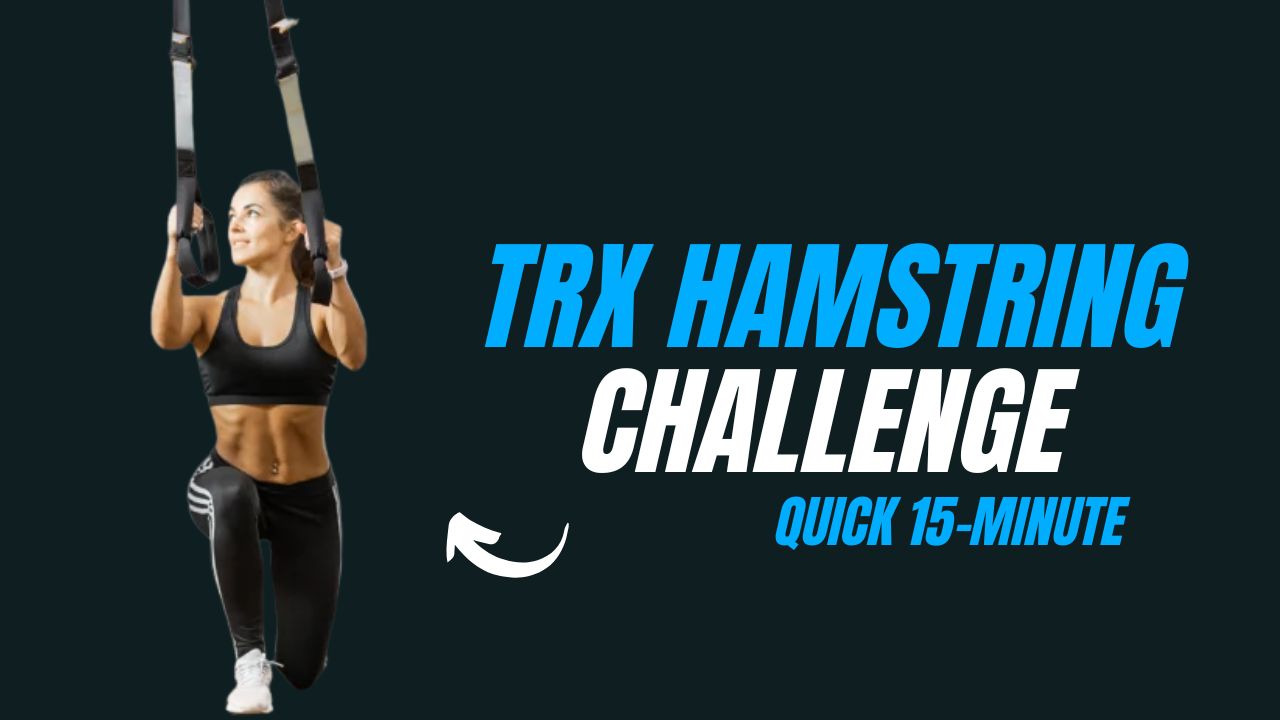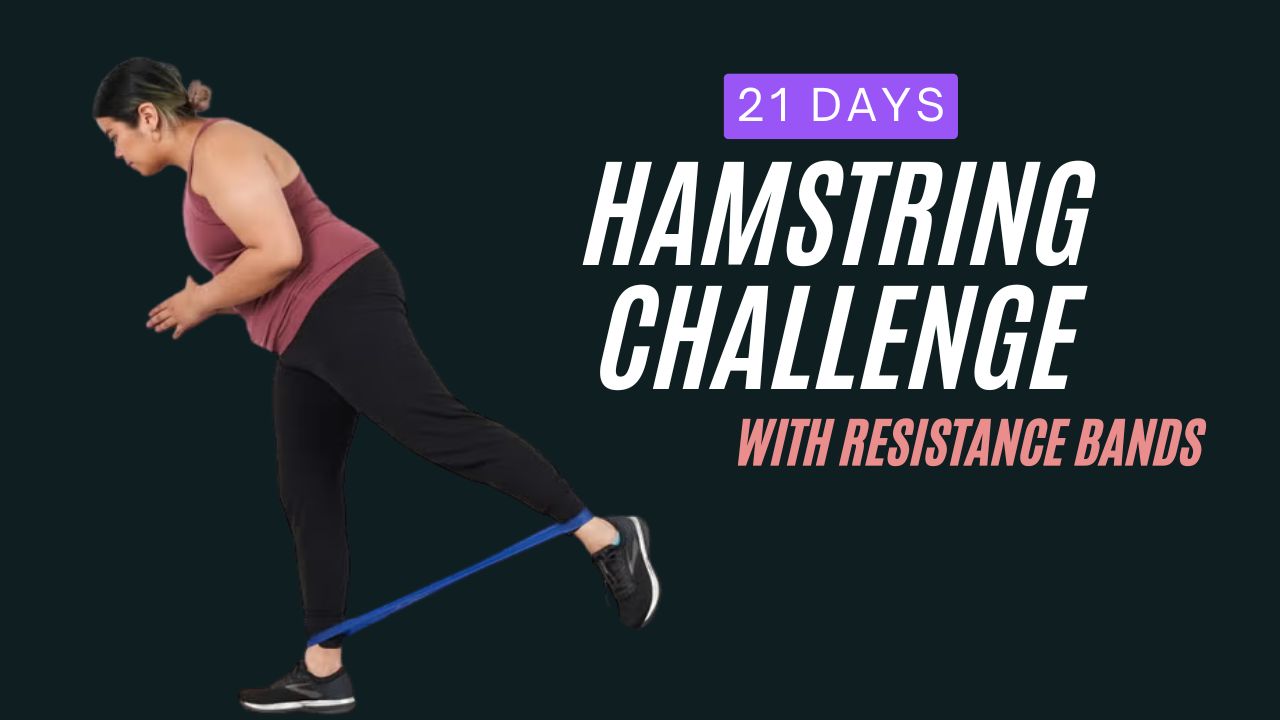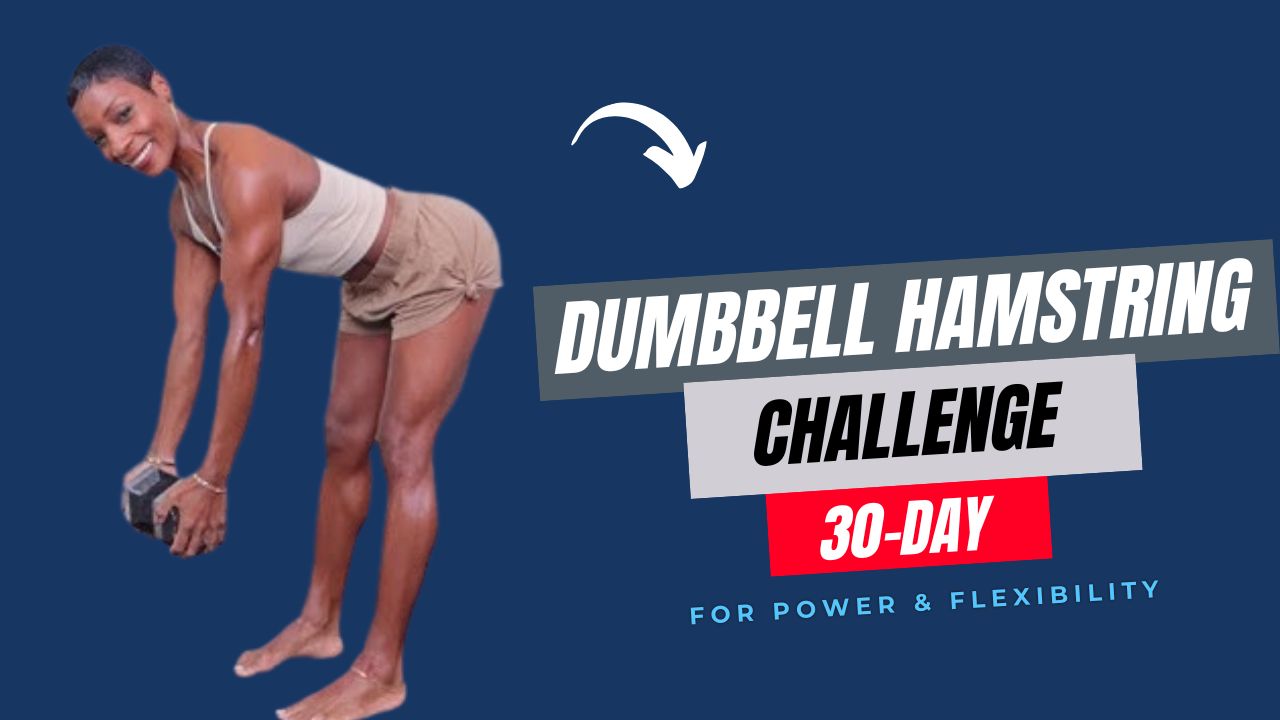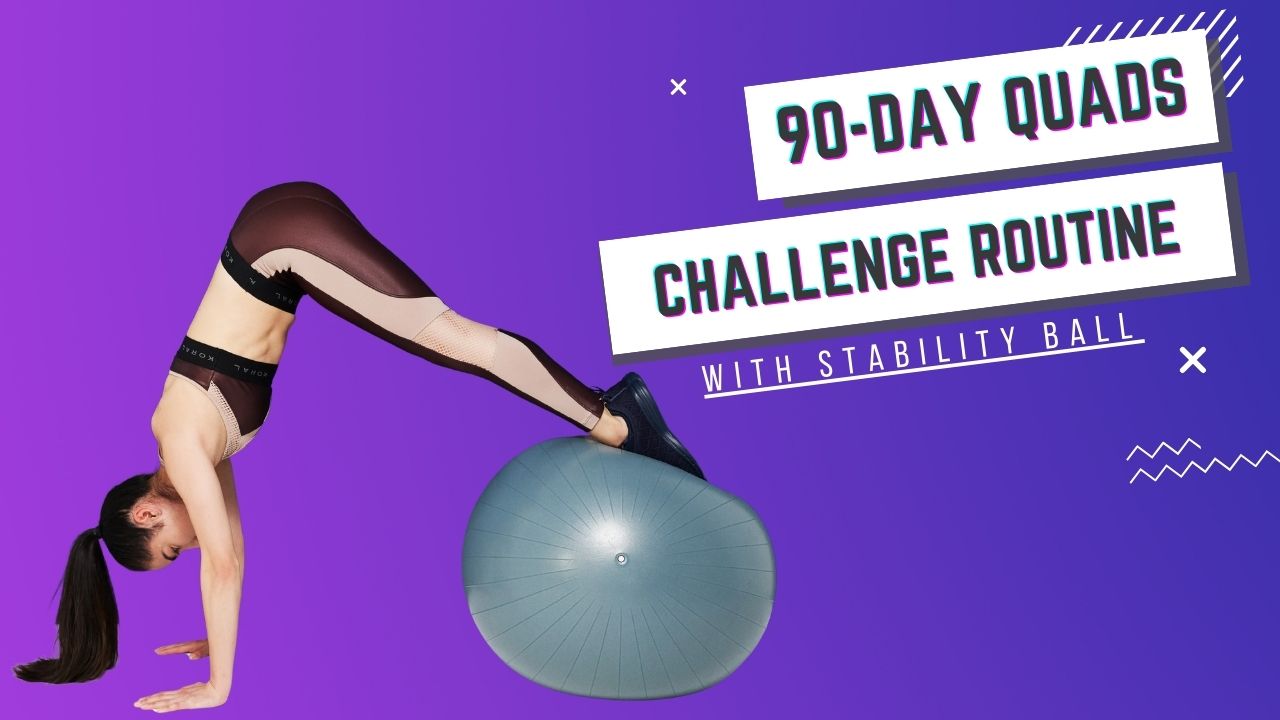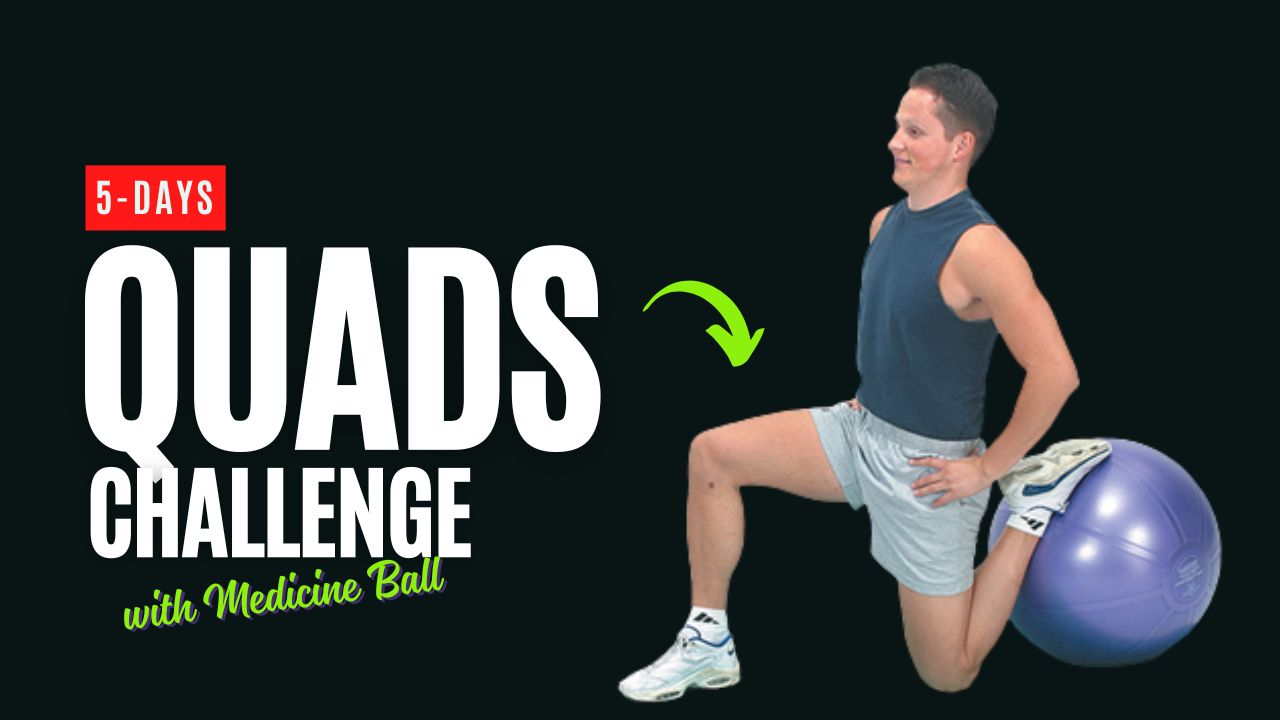Most people associate the medicine ball with abs or cardio circuits—but here’s the truth: it’s one of the most underrated tools to sculpt stronger quads and glutes.
If you’re stuck in a squat-lunge-squat loop, this post is your golden ticket to variety, challenge, and results.
Did you know? Training with a medicine ball not only strengthens muscles but also enhances coordination, improves power, and increases functional strength—especially when targeting powerhouse muscle groups like the quadriceps and glutes.
In this post, you’ll discover 12 powerhouse moves using just a medicine ball that will ignite your lower body, shape your thighs, and lift your glutes. Let’s get rolling!
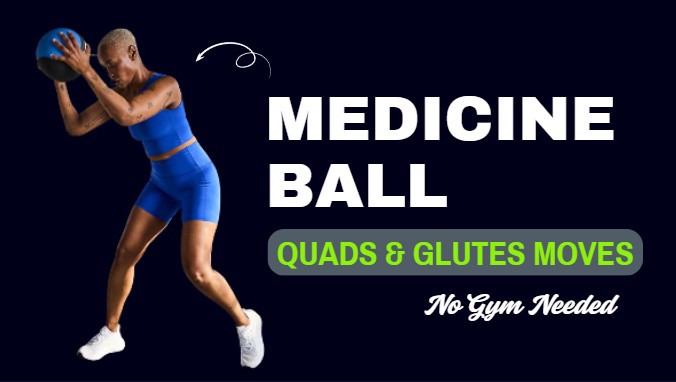
Table of Contents
What Can Happen After 30 Days of Medicine Ball Quads & Glutes Training
| Timeframe | Visible & Feelable Changes |
|---|---|
| Week 1 | Improved balance and coordination, slight glute engagement awareness. |
| Week 2 | Increased muscle activation in glutes and quads during everyday movements. |
| Week 3 | Slight firmness in thighs and buttocks; better control in single-leg moves. |
| Week 4 (Day 30) | Noticeable lift in glutes, stronger quads, improved posture and stability. |
| Bonus Outcome | Enhanced core strength, faster calorie burn, and increased workout stamina. |
Do’s & Don’ts of Medicine Ball Quads & Glutes Exercises
| Do | Don’t |
|---|---|
| Warm up your hips, glutes, and quads before starting. | Don’t jump straight into weighted moves without warming up. |
| Focus on slow, controlled form over speed or ball weight. | Don’t compromise form just to use a heavier ball. |
| Keep your core engaged during every move. | Don’t let your lower back arch or go limp during exercises. |
| Use full range of motion for deeper muscle engagement. | Don’t cut the movement short—half reps reduce the benefits. |
| Start with bodyweight if you’re new, then add the medicine ball. | Don’t force medicine ball use if you haven’t mastered basic versions. |
| Perform exercises in front of a mirror if possible to monitor form. | Don’t guess your posture—poor form leads to injury. |
| Rest 30–60 seconds between sets based on your fitness level. | Don’t skip rest and over-fatigue your muscles, especially in plyo moves. |
| Incorporate a mix of strength and explosive (power) movements. | Don’t stick to only one movement type—variety trains more muscle fibers. |
| Progress slowly by increasing reps, sets, or ball weight weekly. | Don’t push for progress too fast—it risks injury and poor recovery. |
| Stretch and cool down after completing your workout. | Don’t finish abruptly without cooling down—it can cause soreness. |
12 Medicine Ball Moves For Quads & Glutes
1. Medicine Ball Goblet Squat
Muscles Targeted: Quads, Glutes, Core
How To:
- Hold the medicine ball at chest level with both hands.
- Stand with feet shoulder-width apart.
- Lower into a squat, keeping your chest tall and elbows close.
- Push through your heels to stand back up.
Pro Tip: Try pausing for 2 seconds at the bottom to fire up your glutes.
2. Medicine Ball Front Lunge with Rotation
Muscles Targeted: Quads, Glutes, Core (Obliques)
How To:
- Hold the ball at chest level.
- Step forward into a lunge.
- As you lower, rotate your torso toward the front leg.
- Return to start and repeat on the other side.
Did You Know? This move mimics real-world rotational strength, crucial for athletes.
3. Medicine Ball Glute Bridge Press
Muscles Targeted: Glutes, Hamstrings, Core
How To:
- Lie on your back, knees bent, feet flat.
- Place the ball on your hips, pressing down gently.
- Lift your hips until your body forms a straight line.
- Lower with control.
Tip: Squeeze your glutes at the top for max activation.
4. Bulgarian Split Squat with Medicine Ball
Muscles Targeted: Glutes, Quads, Calves
How To:
- Place one foot behind on a bench.
- Hold the ball at chest level.
- Lower into a single-leg squat, keeping your front knee aligned.
- Return to standing.
Myth Buster: “Squats alone build glutes”—false. This move targets glutes more intensely than traditional squats.
5. Medicine Ball Wall Squat Hold
Muscles Targeted: Quads, Glutes
How To:
- Stand against a wall with the medicine ball between your lower back and the wall.
- Slide down into a squat.
- Hold for 30–60 seconds.
Burn Bonus: Add small pulses for an extra challenge.
6. Medicine Ball Step-Up
Muscles Targeted: Quads, Glutes, Core
How To:
- Hold the ball at chest height.
- Step onto a bench or box.
- Drive through the heel and step up.
- Lower back down and repeat.
Tip: Add a knee drive at the top for a balance and core challenge.
7. Medicine Ball Sumo Squat to Overhead Press
Muscles Targeted: Inner Thighs, Glutes, Quads, Shoulders
How To:
- Take a wide stance with toes turned out.
- Hold the ball with both hands.
- Lower into a sumo squat.
- As you rise, press the ball overhead.
Power Move: This is great for combining strength and cardio in one explosive motion.
8. Medicine Ball Hip Thrust
Muscles Targeted: Glutes, Hamstrings
How To:
- Sit on the floor with upper back against a bench.
- Place the ball on your hips.
- Drive hips up until thighs are parallel.
- Lower with control.
Fact: This exercise activates glute max better than standard squats (EMG studies confirm!).
9. Reverse Lunge with Medicine Ball Pass
Muscles Targeted: Quads, Glutes, Core
How To:
- Step back into a lunge.
- Pass the ball under your front thigh, hand to hand.
- Return and repeat.
Why It Works: Adds instability and coordination for deeper muscle activation.
10. Medicine Ball Side Lunge Tap
Muscles Targeted: Glutes, Inner Thighs, Quads
How To:
- Step out to the side into a deep lunge.
- Tap the ball to the inside of your lunging foot.
- Push back to center and repeat on the other side.
Did You Know? Side lunges help balance out quad-dominant training by recruiting glutes and abductors more effectively.
11. Single-Leg Deadlift with Medicine Ball
Muscles Targeted: Glutes, Hamstrings, Core
How To:
- Stand on one leg, holding the ball in front.
- Hinge forward at the hips, extending the opposite leg.
- Lower the ball toward the floor.
- Return with control.
Balance Bonus: Strengthens stabilizers and improves hip mobility.
12. Medicine Ball Squat Jump
Muscles Targeted: Quads, Glutes, Calves
How To:
- Hold the ball at chest height.
- Lower into a squat.
- Jump up explosively.
- Land softly and repeat.
Note: Builds power, explosive strength, and muscle endurance.
Final Thoughts
If you thought medicine balls were just for crunches or slams—think again. These 12 moves unlock a new layer of strength and tone for your quads and glutes, whether you’re a beginner or seasoned lifter. They’re also joint-friendly, easy to modify, and add fun variety to your leg day.
Try adding 4–6 of these moves to your lower body routine 2–3 times per week for visible results in power, shape, and endurance.
Frequently Asked Questions (FAQs)
Can you really build quads and glutes using a medicine ball?
Yes! A medicine ball adds resistance, instability, and functional movement patterns that effectively target and challenge your glutes and quads. When paired with controlled form and progressive overload, it’s a powerful tool for sculpting and strengthening.
Are these exercises suitable for beginners?
Absolutely. Most of the movements can be modified for beginners by using a lighter ball or reducing reps. Once form and balance improve, you can scale up with a heavier ball or increased sets.
How heavy should the medicine ball be for lower body workouts?
For lower body strength, a 6–12 pound (3–6 kg) medicine ball is ideal for most people. Focus on form first, then increase weight gradually. For explosive moves like jumps, a slightly lighter ball improves control and safety.
How many times a week should I do these exercises?
You can include these 2–3 times per week as part of your leg or full-body training. Allow at least 48 hours between sessions for muscle recovery if you’re training glutes and quads intensely.
Can I lose fat and tone my legs with these exercises?
Yes, especially when combined with proper nutrition and overall activity. These moves engage large muscle groups, which boosts calorie burn, and helps in reducing fat and enhancing muscle tone in the legs and glutes.
How long will it take to see visible results?
Most people start noticing strength and firmness within 3–4 weeks with consistent workouts. Visible definition may take 6–8 weeks depending on your current fitness level, diet, and workout frequency.
Can I replace dumbbell leg exercises with medicine ball moves?
In many cases, yes. Medicine balls offer similar resistance with added versatility, especially for dynamic and functional training. They’re also joint-friendly and easier to grip for those with limited mobility or grip strength.
Are these exercises safe during pregnancy?
Some of them can be safe, but always consult with a healthcare provider or prenatal fitness expert. Avoid any moves that involve jumping, deep squats, or instability during pregnancy unless medically approved.
Can these be done at home without a gym setup?
Yes! These are perfect for home workouts. All you need is a medicine ball and optional support (like a bench or chair) for some exercises like Bulgarian split squats or hip thrusts.
Is the medicine ball better than resistance bands for lower body workouts?
They both offer unique benefits. Medicine balls are great for dynamic, explosive movements, while resistance bands provide constant tension and are excellent for isolation work. For best results, combine both in your weekly training.





